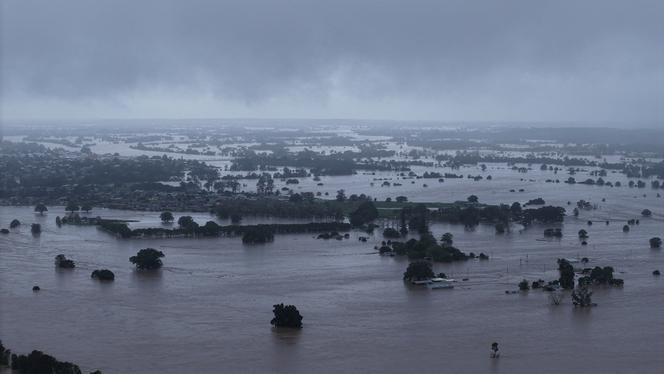Australia floods: More than 16,000 people expected to remain isolated until at least Thursday

The equivalent of more than four months of rainfall has fallen in two days on several areas of south-eastern Australia, flooding homes and covering roads with muddy water, forcing residents to take refuge on their roofs, authorities reported on Wednesday, May 21. "The rain is falling quite violently (...) and it is not draining away, partly because the ground is saturated and the rivers are in flood," New South Wales State Emergency Services Minister Jihad Dib told reporters.
Some 300 kilometers north of Sydney, the town of Taree is a concern for authorities, where 415 millimeters of rain have fallen since Monday, more than four times the average rainfall for the month of May. The level of the river feeding the Taree surpassed its record set almost a century ago, in 1929, reaching 6.3 meters on Wednesday. The flooding has led some residents to spend the night on the roofs of their homes, waiting for rescuers.
"Intensifying"Dallas Byrnes, head of the state emergency services, described the situation as "escalating." "We have a number of people being rescued from rooftops and upper floors of homes," Byrnes told public broadcaster ABC.

According to authorities, more than 16,000 people are expected to remain isolated until at least Thursday. Further heavy rain is expected in the next 48 hours, with some 200 millimeters anticipated in several locations, authorities warned Wednesday.
Global warming, caused primarily by the burning of oil, coal, and gas, can boost rainfall and storms because heat provides them with energy. Warmer oceans generate more evaporation, and warmer air can hold more water vapor (7% more per additional degree Celsius), leading to more intense rainfall and storms.
The World with AFP
Contribute
Reuse this contentLe Monde



%3Aquality(70)%3Afocal(3556x2460%3A3566x2470)%2Fcloudfront-eu-central-1.images.arcpublishing.com%2Fliberation%2FIDMUD2TWHFEX3D4NRPAPOA674E.jpg&w=3840&q=100)

